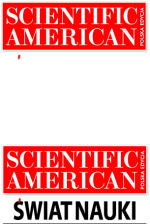 2006
2006
 2008
2008
 2010
2010
 2012
2012
 2014
2014



 |
‘A predator is born under the watchful eye of scientists’
Analysis of the early stages of development of spider Xerolycosa nemoralis using computed microtomography and microscopic techniques
Agata Bednarek – author of photograph Dozens of passengers, 3 June 2011 |

|
Description popularizing the research project
Newborn kittens are so cute that you immediately fall in love with them. The same is true with puppies that just opened their eyes for the very first time, young does making their first trembling steps in the world, or bear cubs like helpless fluffy balls. Everybody who has ever seen just hatched chickens surely felt the urge to look after them. Even young lizards, grass snakes or frogs, not so long before just tadpoles, do not inspire disgust or fear. On the contrary, almost all animal newborns make us want to nurture them. Almost all but there are some exceptions. They are tiny spiders that have just left the safety of their cocoon. In their case, tenderness and care are replaced with disgust and fear. Young spiders from the moment they hatch resemble smaller versions of adults. From the very beginning of their life, they are able to hunt. They are nimble and fast. Armed with venom they are able to attack their very first prey, even if it is much bigger than they are. They can weave webs as they are hatched with operational spinnerets. It takes just one month to shape a perfect octopod predator from a fertilized egg cell. The changes taking place during the embryogenesis are never again so rapid. In the four weeks cephalothorax and abdomen, chelicerae, pedipalps and other limbs emerge from egg yolk. A dark spot marks the place where the eyes will be, the abdomen swells where the spinnerets will develop. Microclimate of the spider incubator – cocoon – ensures safe development of several dozens, sometimes over a hundred, spider siblings. Whereas the spider mother ceaselessly makes sure that the cocoon is safe with its precious contents. It is hard to see childlike helplessness in the newly hatched spiders. After four weeks in a cocoon, their childhood is over and they have to start hunting to survive.
Abstract
Living in contaminated environments may cause disturbances in the energy homeostasis of animals living there, including spiders, commonly found at contaminated sites. Shifts in the energy balance may lead to a series of negative responses that can be observed at various stages of egg production and embryonic development, which is seldom studied in spiders. In this research, we checked how anthropogenic contaminants might affect early stages of development in spider Xerolycosa nemoralis collected in the polluted site and the reference site. We used light microscopy to diagnose histological sections of eggs at different stages of development, and observe their morphological changes. Computer microtomography was applied to observe morphological changes inside the eggs without destroying cocoons. This is a novel technique, which has never been used previously in that kind of studies. The study showed that environmental pressure influences the embryonic development of spider X. nemoralis. Duration of embryogenesis was longer for the eggs from Katowice Welnowiec (16.5 ± 1.2 days) than for the eggs sampled in Pilica (14.5 ± 0.5 days; the Mann-Whitney U, p= 0.003). Similarly, the postembryonic development was longer for the eggs collected in the contaminated sites (12.1 ± 1.2 days) in contrast to the eggs from the reference area (8.4 ± 0.9 days; T test, p< 0.001). It was also found that the embryonic survival rate was higher for eggs from the reference site (7.9 ± 1.4 young spiders) in comparison to the contaminated area (4.3 ± 1.3; U Mann-Whitney test, p = 0.002). Histological analysis allowed understanding such processes as gastrulation, and migration of cumulus. The formation of the embryonic Siamese twins with the egg collected in the contaminated site was observed. All the research methods used to investigate the early stages of development were useful for such studies, and each of them allowed observation of different parameters.
Patronat honorowy
Leszek Jodliński
Dyrektor Muzeum Śląskiego w Katowicach
Zygmunt Łukaszczyk
Wojewoda Śląski
Jan Malicki
Biblioteka Śląska
Piotr Uszok
Prezydent Katowic
Adam Matusiewicz
Marszałek Województwa Śląskiego














